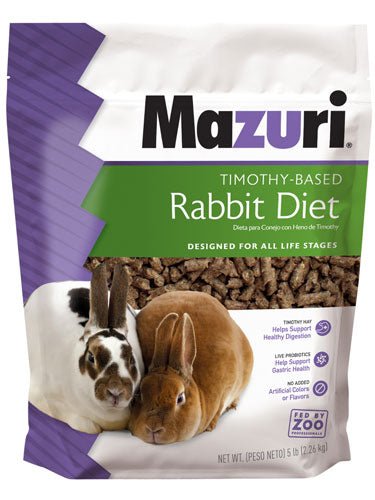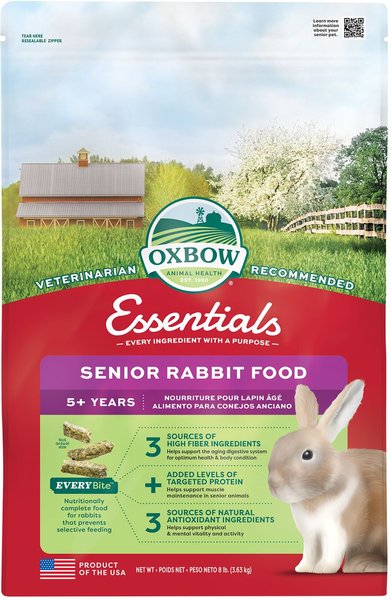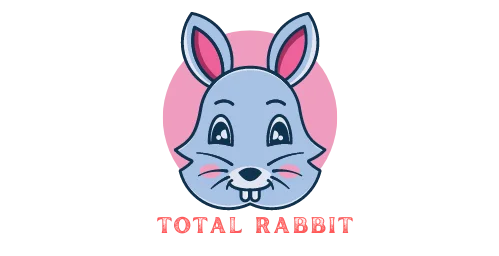5 Life Stages of Pet Rabbits And How to Keep Them Healthy

Rabbits are wonderful, social creatures that make great pets. They have unique personalities and can bond with their human companions in a special way. But like all animals, rabbits have different life stages, and each stage has its own particular needs in terms of diet, housing, and care.
Here are the five life stages of pet rabbits and what you need to do to keep them healthy at each stage.
The life expectancy of a pet rabbit is around 10 years, but with proper care they can enjoy a long and healthy life. Here are the five main stages of a pet rabbit’s life and what you can do to keep them healthy at each stage.
1. Baby rabbits, or kittens, are typically born in litters of four to eight.
At this stage they are very vulnerable and need special care to ensure their survival. Provide them with a clean, warm, dry place to live and plenty of fresh hay, water, and milk replacer. Avoid handling them too much as their delicate bones can easily be broken.
2. Juvenile rabbits reach sexual maturity at around 4-6 months old. They should be spayed or neutered at this time to prevent unwanted litters and help reduce aggression (especially in males). continue providing plenty of hay, fresh water, and vegetables as part of their diet.
You can also start introducing some pellets now if desired.
3. Adult rabbits are typically considered full grown by 1 year old although some larger breeds may take 2 years to reach their full size. This is the prime of a rabbit’s life and when they are most active and playful.
Keep up with the good diet including hay, fresh water, vegetables, and pellets (if desired). Be sure to provide plenty of toys and enrichment activities to keep your bunny mentally stimulated. Spaying/neutering will also help reduce aggression at this stage (especially in males).
4 Senior rabbits usually begin around 6-8 years old although smaller breeds may live longer while larger breeds may show signs sooner . Diet is still important for seniors as well as providing a calm environment since they tend to get less active with age . Be sure your bunny has regular vet checkups so any health problems can be caught early .
Some common senior health issues include dental disease , arthritis , weight gain , heart disease , kidney disease , cancer , etc . Proper care during this stage can help your bunny enjoy a good quality of life even into their golden years ! 5 Last but not least is the end-of-life stage which sadly comes for all pets eventually . It ‘s important to make sure your bunny is comfortable during this time whether that means letting them eat whatever they want , giving them pain medication if necessary , or just spending extra time cuddling them . Ultimately it ‘s up to you how you want to handle this difficult situation but just know that you ‘re not alone – many other pet parents have been through it before .
The Life Cycle of a Rabbit from Birth to Old Age
4 Stages of Rabbit Life Cycle
The average lifespan of a domesticated rabbit is 8 to 12 years. However, rabbits can live much longer if they are well cared for and have access to good quality food and medical care. Here is a breakdown of the different stages of life that a rabbit will go through:
1. Birth to 3 weeks old: At this stage, baby rabbits are called kittens or kits. They are blind and deaf, and their bodies are covered in soft downy fur. Their mother will take care of them by nursing them and keeping them warm.
2. 3 weeks to 6 months old: This is when rabbits start to grow their adult teeth and their fur starts to change into the longer, coarser coat that they will have as adults. They also start to explore their surroundings more and play with other rabbits (if they have any).
3. 6 months to 2 years old: Rabbits reach sexual maturity at around 6 months old but may not be ready to breed until they are closer to 2 years old.
At this stage, they should be spayed or neutered if you do not intend to breed them.
4. 2 years onwards: Now your rabbit is an adult! They will continue to enjoy good health if they receive proper care and attention from you.
8 Week Old Rabbit Care
Assuming you are referring to an 8 week old pet rabbit:
A diet for a growing rabbit should consist of hay, fresh vegetables, and a small amount of pellets. The vegetables can be changed every other day, but the hay should always be available.
A good rule of thumb is to offer 2-3 cups of vegetables per 6 lbs. body weight daily. Young rabbits also need unlimited access to fresh water.
At 8 weeks old, your rabbit’s diet should consist mostly of hay with some fresh vegetables as well as a small amount of pellets each day. The vegetables can be changed every other day, but the hay should always be available. A good rule of thumb is to offer 2-3 cups of vegetables per 6 lbs body weight daily along with unlimited access to water.
Wild Rabbit Life Stages
Most people are familiar with the life stages of a domesticated rabbit, but did you know that there are also several different life stages for wild rabbits? In this blog post, we’ll take a closer look at the different life stages of a wild rabbit and what they entail.
The first stage of a wild rabbit’s life is the newborn stage.
Newborn rabbits are born blind and deaf and are completely dependent on their mother for food and shelter. At this stage, they are very vulnerable to predators and must stay close to their mothers for protection.
The next stage is the juvenile stage.
Juvenile rabbits begin to open their eyes and ears around two weeks old and start to explore their surroundings. They also begin to eat solid food at this stage, but continue to drink milk from their mother. Around six weeks old, juveniles become independent from their mothers and strike out on their own.
The third stage is the adult stage. Adult rabbits reach sexual maturity around six months old and begin looking for mates of their own. Once they find a mate, they will establish a territory together and raise their young as a team.
Adult rabbits usually live between 2-5 years in the wild before dying of natural causes or predation.
Life Cycle of a Rabbit
A rabbit’s life cycle is relatively short, which is why they reproduce so quickly. A female rabbit can have a litter of anywhere from two to twelve babies, and can become pregnant again within days of giving birth. This means that a single pair of rabbits could theoretically produce hundreds of offspring in their lifetime.
The gestation period for a rabbit is only about 31 days, after which the mother will give birth to her young. The newborn rabbits, called kittens or kits, are blind and deaf, and are completely dependent on their mother for food and shelter. They will begin to grow fur within a week, and will be able to see and hear after two weeks.
Rabbits reach sexual maturity at around 4-5 months old, at which point they are ready to start reproducing themselves. Most rabbits live for 2-3 years in the wild, but domestic rabbits can often live up to 10 years or more with proper care.

Credit: www.chewy.com
What are the Life Stages of a Rabbit?
Rabbits have four life stages: birth, juvenility, adulthood, and senescence.
At birth, rabbits are altricial, meaning they are born blind and hairless. Their eyes open at around 10 days old and they begin to grow their fur at two weeks old.
At four weeks old, they are weaned from their mother’s milk and become independent.
During the juvenility stage, which lasts until around six months old, rabbits continue to grow and develop both physically and mentally. They reach sexual maturity at around three to four months old.
As adults, rabbits are fully grown and typically live for around five years. However, some rabbits can live for up to 10 years if well cared for. In the wild, adult rabbits face many predators so their lifespan is often shorter.
During this stage of life, rabbits reproduce and raise young of their own.
The final stage of a rabbit’s life is senescence or old age. This usually occurs after five years but can happen sooner in wild rabbits due to predation risk.
Older rabbits may experience changes in behavior such as sleeping more during the day and becoming less active overall. They may also lose interest in grooming themselves which can lead to health problems like mats forming in their fur.
How Do I Keep My Rabbit Healthy?
There are a few key things you can do to keep your rabbit healthy. First, make sure they have a proper diet of hay, fresh vegetables, and a small amount of pellets. Second, provide them with plenty of water and clean their cage regularly.
Third, give them plenty of exercise by letting them out to play or providing them with toys and tunnels. Finally, take them to the vet for regular checkups and vaccinations. By following these simple steps, you can help your rabbit live a long and healthy life!
What was the Life Cycle of a Pet Rabbit?
A pet rabbit’s life cycle generally consists of four stages: birth, growth and development, adulthood, and senescence.
Birth: A typical litter of rabbits will consist of anywhere from two to twelve young. The mother rabbit will clean and care for her offspring until they are old enough to fend for themselves.
Growth and Development: Baby rabbits, or kittens, grow quickly. At three weeks old they are typically weaned from their mother’s milk and begin eating solid food. They reach sexual maturity at around four months old.
Adulthood: Once a rabbit reaches adulthood, it can expect to live for anywhere from five to ten years, depending on its breed and lifestyle. During this time, the rabbit will be active and playful. Senescence: As a rabbit ages, it may become less active and more prone to illness.
This is the final stage of the life cycle before death.
What Do Rabbits Need to Be Happy And Healthy?
Assuming you would like tips on how to care for a pet rabbit:
Rabbits are social creatures and need companionship to be happy. It is recommended that they be kept in pairs, although some rabbits can do well living solo if they have plenty of human interaction.
A good rule of thumb is that the more time you spend with your rabbit, the happier they will be.
Rabbits also need a stimulating environment to stay happy and healthy. This means providing them with plenty of toys and things to keep them occupied, as well as space to run around and explore.
A hutch or cage is not enough – rabbits need at least four hours out of their enclosure every day to exercise and play.
Finally, diet is important for keeping rabbits healthy. They should have unlimited hay available at all times, as well as fresh vegetables and a small amount of pellets.
Treats should be given sparingly but can include things like fruits, nuts, and seeds.
Conclusion
As rabbits age, they go through different life stages. Here are the five life stages of pet rabbits and how to keep them healthy:
1. Birth to 3 months: This is the most vulnerable stage of a rabbit’s life.
They are susceptible to disease and need plenty of TLC. Make sure to get your rabbit checked out by a vet as soon as possible after birth, and keep an eye out for any health problems.
2. 3 to 6 months: At this age, rabbits start to become more independent and active.
They also start to explore their surroundings more, so it’s important to bunny-proof your home before this stage begins. Keep an eye on your rabbit’s diet during this time and make sure they’re getting enough exercise.
3. 6 months to 1 year: This is when rabbits reach adulthood and their full size.
Their activity level will peak during this time, so make sure you provide plenty of space for them to run around in. Their diet should also be monitored closely at this stage, as they can easily become overweight if they eat too much or don’t get enough exercise.
4. 1 year to 5 years: This is the middle-aged stage for rabbits, when they start to slow down a bit from their earlier activity levels but are still relatively playful and active creatures.
During this time, it’s important not to overfeed your rabbit or let them become lazy – a healthy diet and moderate exercise regime are key in keeping them happy and healthy during these years .
5 . 5 years onwards : As rabbits enter their senior years , they tend to sleep more , move less , and eat less than they did when they were younger .
It’s important not t o let your rabbit become overweight during this time , as obesity can lead t o serious health problems . Make sure t o monitor their diet closely and give them plenty of love and attention – even though they may be slowing down , they’ll still appreciate spending time with you .
